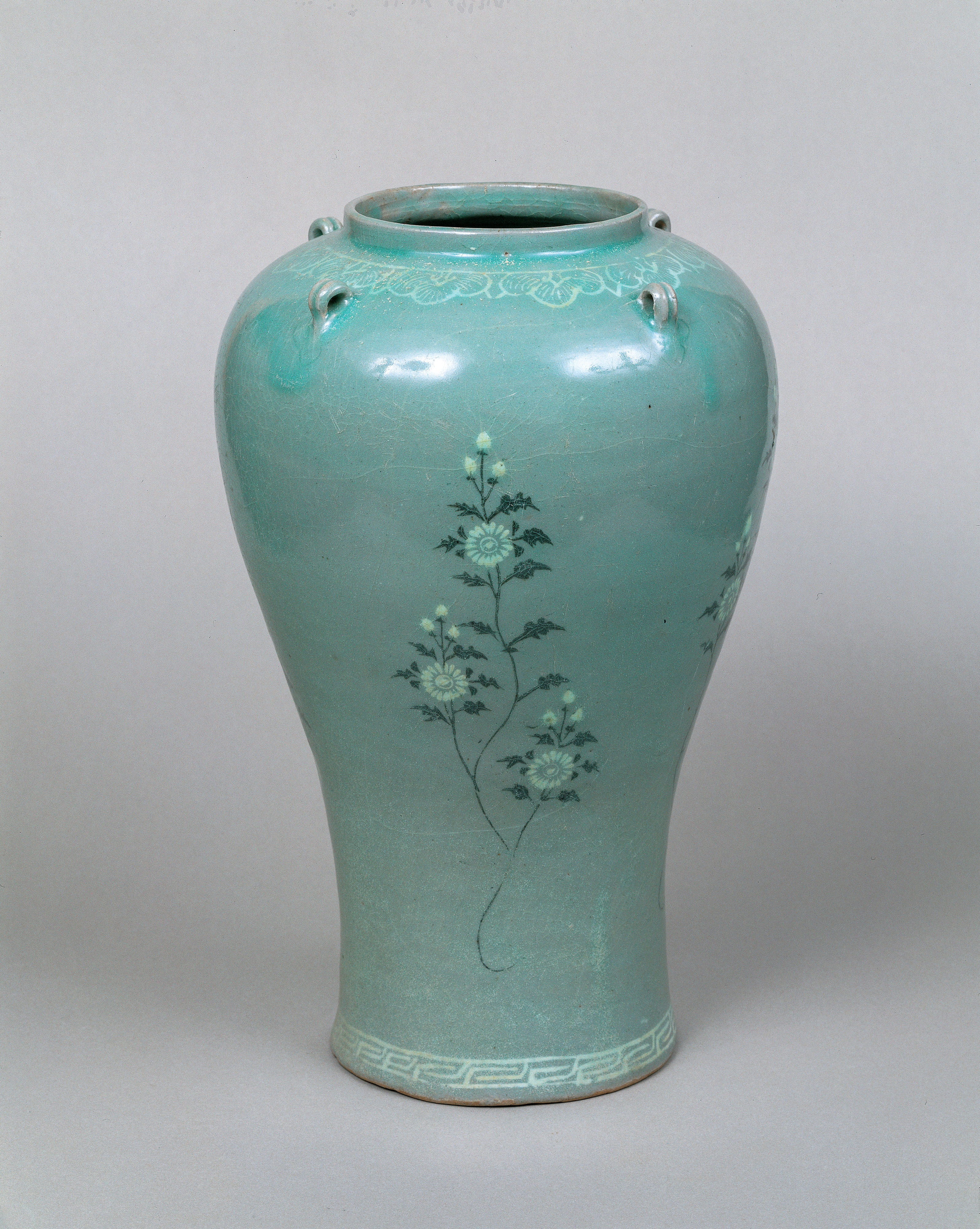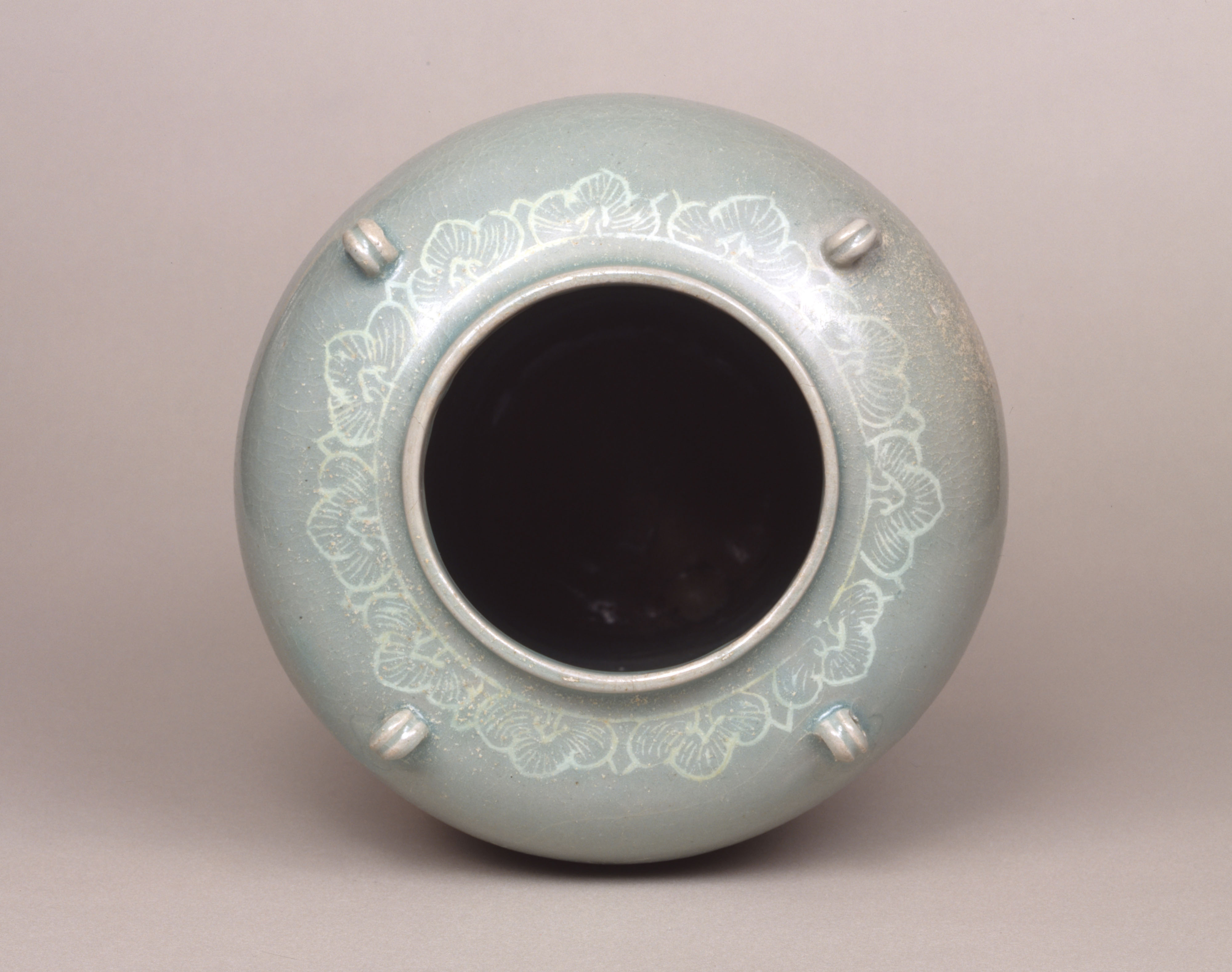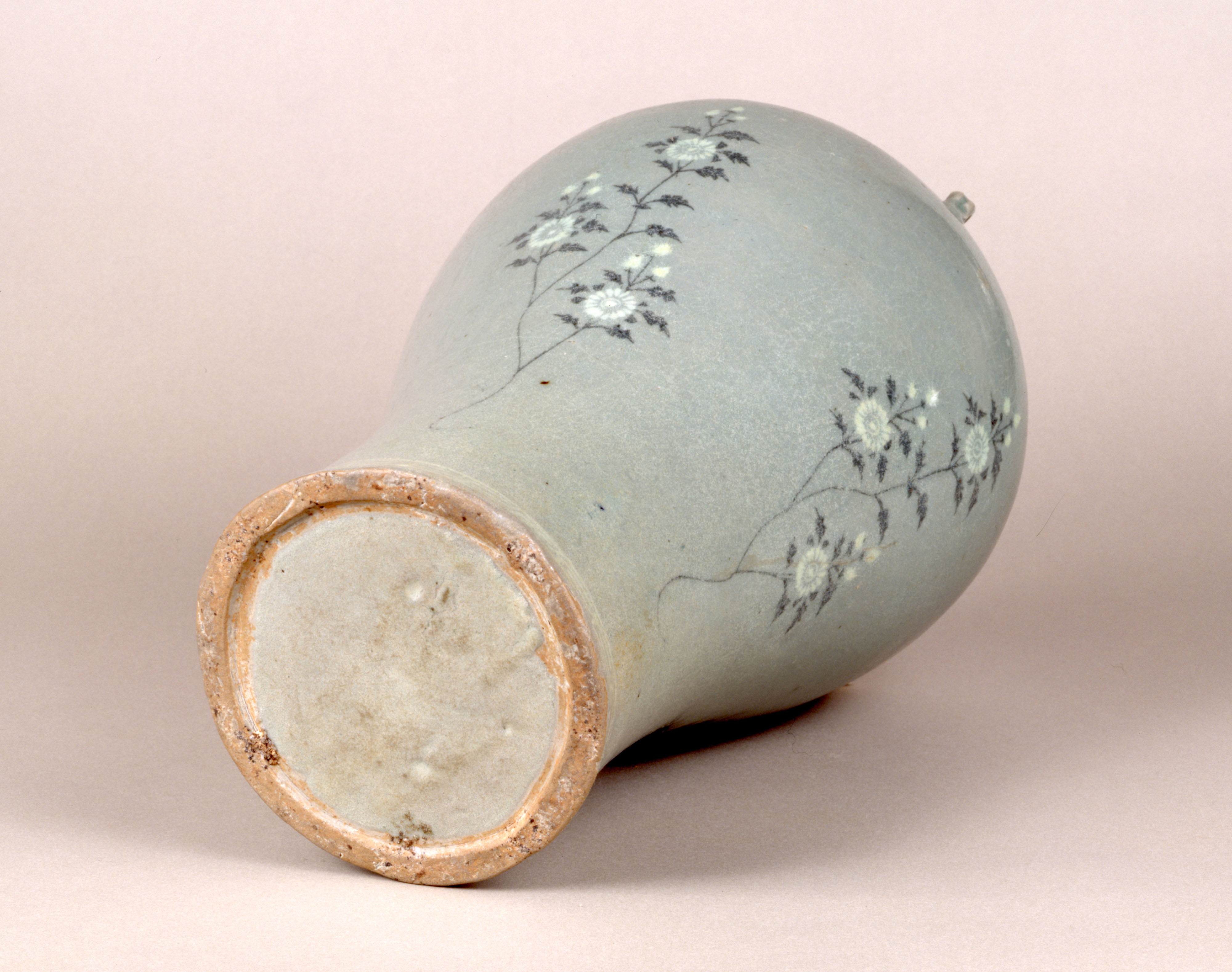
せいじぞうがんきっかもんしじこ 青磁象嵌菊花文四耳壺
12世紀(高麗)
胴にかけて緩やかにすぼまるすらりとした形の青磁の壺で、上部には小さな耳が4つ付いています。胴部の4面には象嵌技法で菊花の折枝文が施されています。象嵌技法は、文様を彫った後、素地とは異なる土を埋め込み文様を表す技法で、朝鮮半島の高麗青磁の代表的な装飾技法として知られています。その他にも、仏具「如意」の頭に形が似た如意頭文や雷文も見られます。なお、4つの耳の付け根にも如意頭文が刻まれています。白黒象嵌で表された菊花文は、気品と潤いのある青磁釉と相まって優雅な趣を醸し出しています。
※耳とは壺の上部にある主に穴の開いた突起状の装飾です。
| 寸法 | 高32.7cm 最大径20.8cm |
|---|---|
| 制作地 | 生産地域:朝鮮 |
| 寄贈者名 | 浦上敏朗 |

Jar, celadon with four handles and a design of inlaid chrysanthemum flowers
12th century
This celadon jar has a small mouth and large bulging shoulders that taper gracefully toward the bottom. The upper part of the body is set with four equally spaced small handles. The entire surface of the body is decorated with inlaid sprays of chrysanthemums, also equally spaced around the circumference. “Inlay” is a decorative technique in which a design is first carved on the surface of the porcelain. Then, to emphasize the design, the carved area is filled with a type of clay that is different from the substrate material. This technique is also known as a representative decorative style on Goryeo celadon from the Korean Peninsula. In addition, this piece also bears a ruyi, a curved motif symbolizing the head of a ceremonial Buddhist scepter, as well as a raimon (lightning) design. Moreover, the four handles also have a ruyi design at each of their bases. The chrysanthemum designs inlaid in black and white give an elegant atmosphere to the whole, in coordination with a celadon glaze, which is the epitome of grace and refinement.
* The “handles” are projecting decorative nubs with holes in them, which are attached to the upper part of a jar.
| Donor Name | Uragami Toshiro |
|---|

青瓷象嵌菊花文四耳壺
這個青瓷壺,壺身下部逐漸收起,上部有4個小耳朵。壺身的4麵有鑲嵌技法製作的菊花折枝紋樣。鑲嵌技法是指,雕刻圖案後,嵌入與坯料不同的土來表現圖案的技法,也是朝鮮半島高麗青瓷的代表性裝飾技法。除此之外,還可以看到與佛具“如意”頭部形狀相似的如意頭紋以及雷紋。另外,4個耳朵的根部也刻有如意頭紋。黑白鑲嵌法鑲出的菊花紋,與高貴潤澤的青瓷釉相輔相成,展現出優雅的情趣。
※耳是指壺上部開孔的突起狀裝飾物。
| 捐贈者 | 浦上敏朗 |
|---|

청자 상감 국화문 사이 호
둥그런 상부에서 부드럽게 오므려지며 떨어지는 날씬한 형태의 청자로, 윗부분에는 작은 ‘귀’ 네 개가 붙어있습니다. 몸통 부분 4면에는 상감 기법으로 국화 가지 문양이 입혀져 있습니다. 상감 기법은 문양 부분을 그려 파낸 후, 자기에 쓰인 토대 흙과는 다른 종류의 흙을 채워 넣어 문양을 나타내는 것으로, 한반도 고려청자의 대표적인 장식 기법으로 알려져 있습니다. 그 밖에도 불교 도구인 ‘여의’의 머리 부분과 모양이 비슷한 여의두 문양(여의두문)이나 와권 문양(뇌문)도 보입니다. 또한 각각의 귀의 접합부분에도 여의두문이 새겨져 있습니다. 흑백 상감으로 표현된 국화 문양은 기품있고 윤기가 흐르는 청자유와 어우러져 우아한 정취와 매력을 뿜어냅니다.
※‘귀’는 항아리 상부에 있는 주로 구멍이 뚫린 돌기 형태의 장식을 말합니다.
| 기증자명 | 우라가미 토시로 |
|---|


